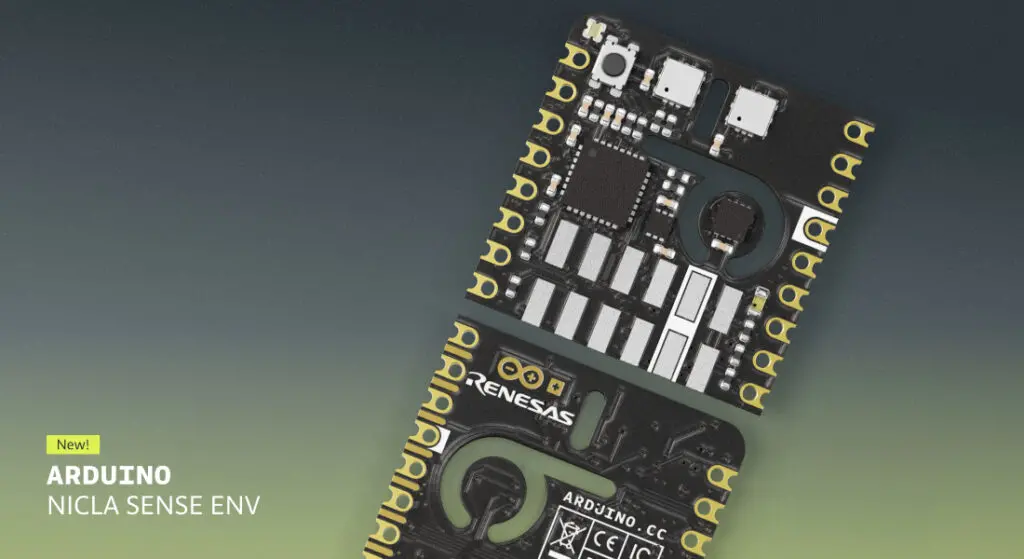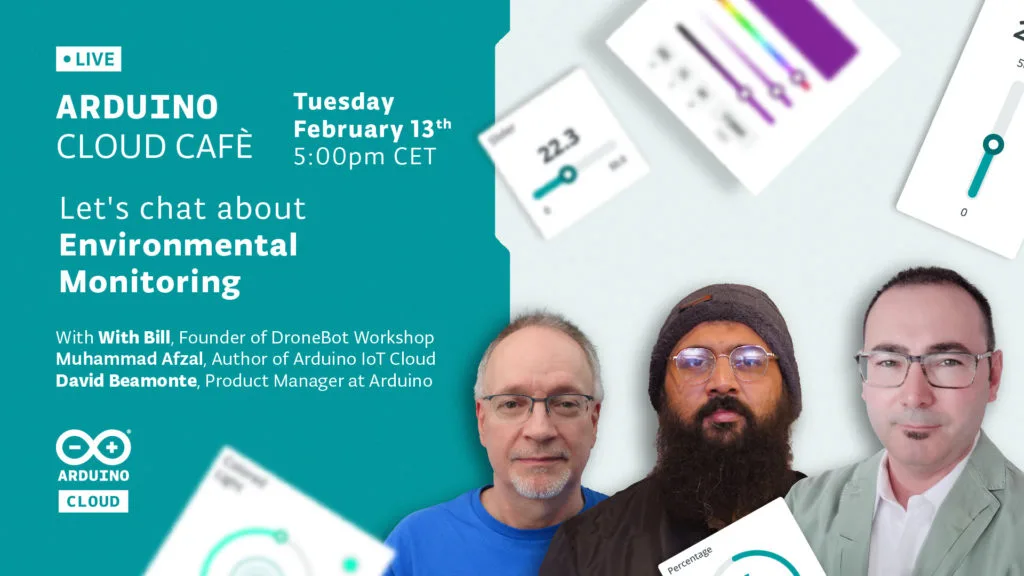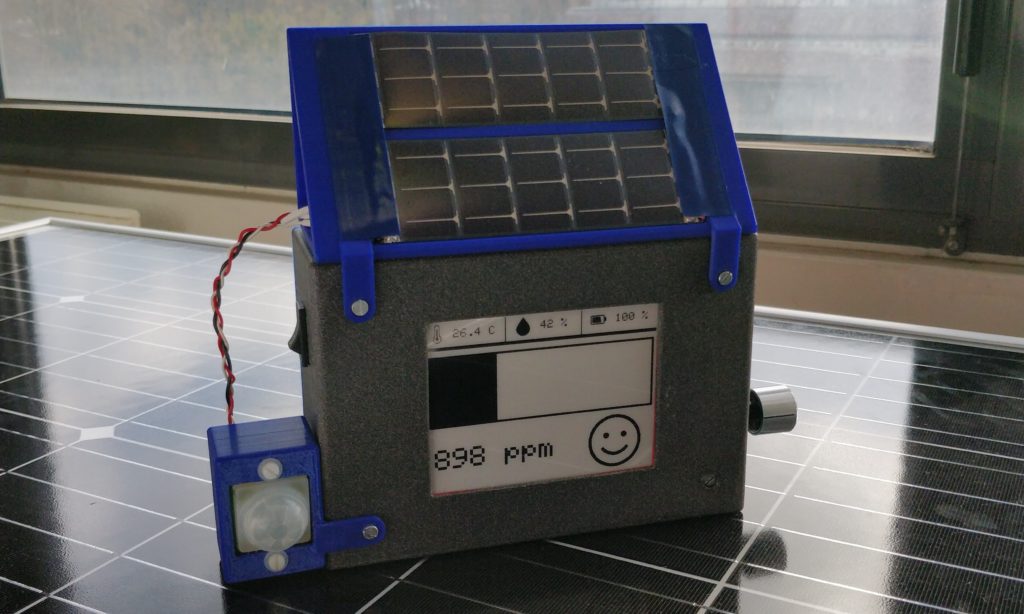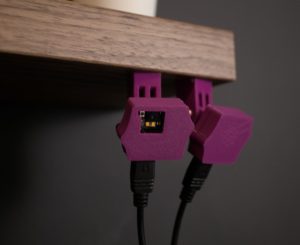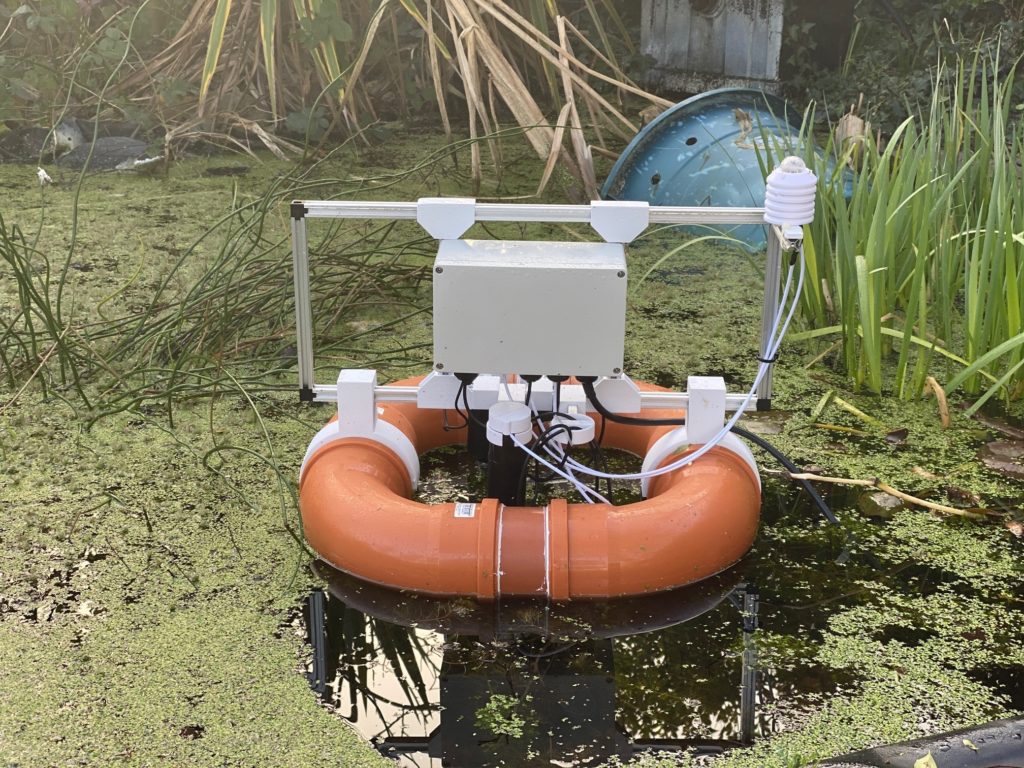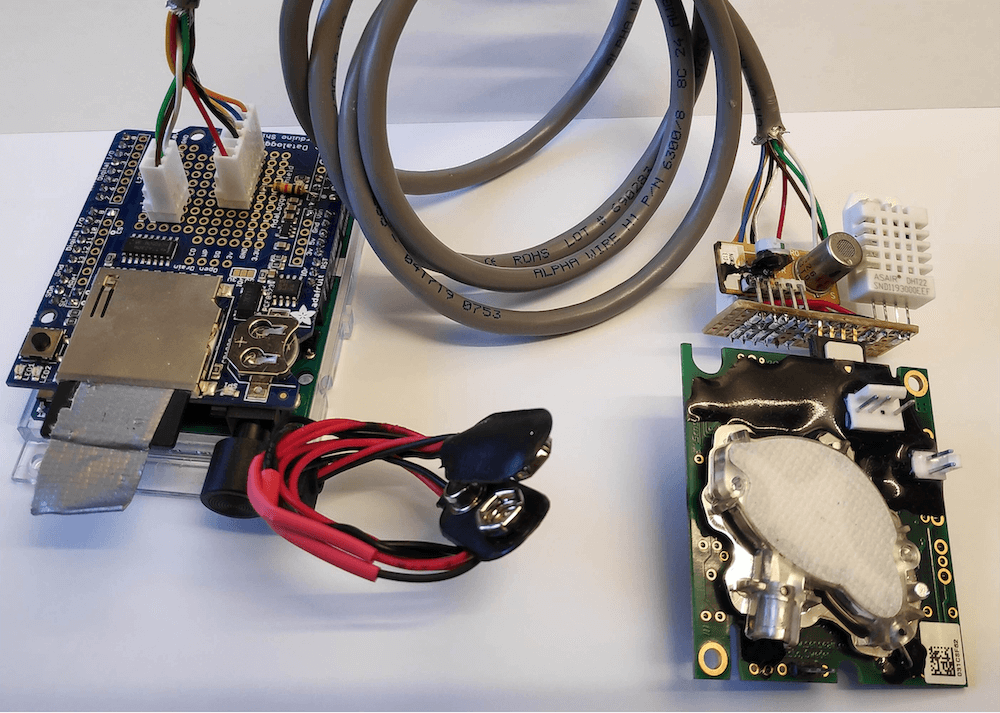Schlagwort: Environmental Monitoring
-

Arduino Nicla Sense Env: adding advanced environmental sensing to a broad range of applications
Reading Time: 4 minutesWe’re thrilled to announce the launch of Nicla Sense Env: the latest addition to our portfolio of system-on-modules and sensor nodes, empowering innovators with the tools to unlock new possibilities. This tiny yet powerful sensor node is designed to elevate your environmental sensing projects to new heights. Whether you’re a seasoned professional…
-

Improve indoor air quality with Arduino
Reading Time: 4 minutesWhen we think about air quality and pollution, it’s easy to conjure up images of smog-filled cities and power plants churning clouds of poison into the atmosphere. And while all this is still important, and has massive consequences for our health, it’s all too easy to overlook the air pollution that takes…
-

Arduino Cloud Café: Let’s chat about environmental monitoring!
Reading Time: < 1 minuteExciting news! We’re gearing up for the second edition of Arduino Cloud Café, and we’re thrilled to have you join us. Tune in on Tuesday, February 13th at 5pm CET for an engaging session on environmental monitoring. This time, we have two fantastic guests — Bill from Dronebot Workshop and Muhammad…
-

Vineyard pest monitoring with Arduino Pro
Reading Time: 7 minutesThe challenge Pest monitoring is essential for the proper management of any vineyard as it allows for the early detection and management of any potential pest infestations. By regularly monitoring the vineyard, growers can identify pests at early stages and take action to prevent further damage. Monitoring can also provide valuable data…
-

Small, MKR WAN 1310-powered device monitors CO2 levels in classrooms
Reading Time: 2 minutesHumans are animals and like all animals, we evolved in mostly outdoor conditions where the air is nice and fresh. But modern society keeps most of us indoors the vast majority of the time, which could have negative health effects. There are many potential hazards, including a lack of sunlight and psychological…
-

Monitoring environmental pollution with the Arduino MKR WAN 1300
Reading Time: 2 minutesThe scourge of air pollution claims several million lives globally each year, with industrial processes and energy production accounting for much of it. Because of its harmful nature, governments often set up air quality monitoring stations, although they have to cover large areas and yield low resolution data. To monitor the air…
-

Always know current room conditions with the Oplá IoT Kit and Arduino Cloud
Reading Time: 2 minutesRobert John likes to keep a constant eye on the current temperature and humidity of his room, as even small fluctuations can lead to uncomfortable conditions. And although he can remotely turn the air conditioning on or off, he still needed a way to track these values throughout the day and log…
-

Environmental monitoring of corporate offices with Arduino Pro
Reading Time: 7 minutesThe challenge The quality of the air we breathe has a direct impact on our health. Poor air quality can cause a variety of health problems, including respiratory infections, headaches, and fatigue. It can also aggravate existing conditions such as asthma and allergies. That’s why it’s so important to monitor the air…
-

The Airio Explorer 1 is a Nano 33 IoT-based indoor gas monitor
Reading Time: 2 minutesThe environments we reside in can have massive effects on our health, as poor air quality, crowded spaces, or uncomfortable temperatures can all lead to certain illnesses. Of these metrics, Tindie seller AppliedSBC has focused on air quality since too much CO2 or too little oxygen quickly impact health with sometimes grave consequences.…
-

Keep your surroundings safe and clean with building automation
Reading Time: 3 minutesWhether it’s a home, an office, a school, a restaurant, or something else, it’s always important to keep your indoor environment safe, clean, and pleasant to be inside. It’s also a good idea to keep track of the air quality and conditions around you, not just for safety but also to ensure…
-

Star Wars-themed device monitors indoor environmental conditions
Reading Time: 2 minutesArduino Team — August 22nd, 2022 We don’t need to tell you that Star Wars is a wildly popular franchise. If you include all of the movies, video games, novels, theme park attractions, and so on, it is the fifth-highest-grossing media franchise of all time (somehow just behind Winnie the Pooh). Because of its popularity, Star…
-

Keeping algae in check with a DIY pond monitor
Reading Time: 2 minutesArduino Team — April 12th, 2022 For element14 user christophesky, his garden’s pond acts as a meeting point for a wide variety of animals, including frogs, birds, and insects. However, sudden algae blooms can turn the once-clean pond into a toxin-filled pool that is harmful to its visitors, which is what caused Christopher…
-

Researchers develop a simple logger for greenhouse gas flows
Reading Time: < 1 minuteResearchers develop a simple logger for greenhouse gas flows Arduino Team — July 28th, 2020 Researchers at Linköping University in Sweden have developed an Arduino-based logger to measure levels of methane and carbon dioxide in greenhouse environments. The device also implements a DHT22 temperature and humidity sensor, data from which can be correlated…
